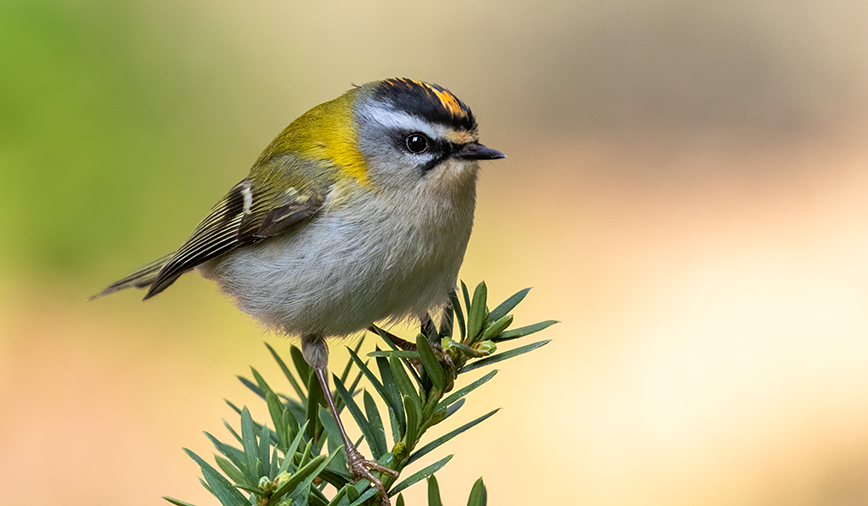Pam’s Perspective
Pam Otto is the Manager of Nature Programs and Interpretive Services for the St. Charles Park District
When you hear the phrase “little kings,” what image comes to mind? An array of 7-oz. bottles of beer, served, as all fine beverages are, in a bucket? If so, maybe you spent too much time in campus bars in the early 1980s, where Little Kings Cream Ale nights were all the rage (so I’ve been told).
But if, when you hear “little kings” you think Regulus, or “little king” species, then this is the column for you. Because it’s little king, or kinglet, season in Kane County.
Over the last few weeks we’ve spotted kinglets, both ruby crowned and golden crowned, in Norris Woods as well as the Hickory Knolls Natural Area in St. Charles.
Even though these birds are olive-drab in color, not to mention tiny (golden crowns weigh about as much as two pennies, ruby crowns about as much as two nickels) they’re not hard to spot, thanks to their conspicuous foraging behavior. Amid much flapping and hopping around, these insect specialists use their narrow beaks to glean aphids, spiders and maybe an occasional berry from trees and shrubs.
In fact, even when they aren’t looking for a snack, these little guys are in near-constant motion, flicking their wings and squiggling around like a sugared-up kid (or naturalist) that can’t sit still.
Such behavior provides a clue to the birds’ metabolism, which is extremely high. That internal furnace needs near-constant fueling; it’s been said that kinglet will starve if deprived of food for even an hour.
This time of year, the birds’ energy demands are especially high. Migration flights and colder temperatures put an increasing demand on that metabolism to keep the bird from freezing. Behaviors like seeking shelter in dense shrubbery, as well as huddling—sitting close together within those shrubs—help conserve heat on cold nights.
As birds who breed in northern spruce and pine forests, where even springtime temps are low, kinglets are no strangers to cold. Golden crowns, whose breeding territory stretches up into northern Canada, have developed some especially interesting reproductive strategies to deal with such extreme conditions.
For one, they build their nests on the underside of spruce branches, thus equipping their home with a sturdy roof. If it snows, all the better—the white stuff makes an excellent insulating layer.
For another, they produce very large clutches, as many as 11 eggs stacked in two layers in the tiny nest. And that’s where things get really interesting. Once the female begins incubating, the male assumes takes on the role of caterer, bringing food to his mate and, eventually, his new family. But then, just when the young are no longer in need of brooding, or warming, by the female, and you think Mom will get a few minutes to herself, she takes off and starts a completely new nest.
This phenomenon, called double-clutching, helps golden-crowned kinglets reproduce in sufficiently high numbers that their mortality rate, which also is high, doesn’t wipe the species out.
If seeing a kinglet would make your day, head out now to any of the high-quality woodlands that dot Kane County, and keep your eyes open. Sometimes it helps to find a flock of chickadees first; kinglets will often associate with them while foraging.
(Continued on Page 2)
Pam’s Perspective – Page 2
The birds are tiny, yes, and drab, and the chances of seeing their namesake “crowns” are sometimes hit or miss— especially with the rubies. In this species (which actually is quite genetically different from the golden crowns) only the male wears the crown—a bright orange-red dot on the top of his head. Further complicating matters, he tends to keep it hidden, flashing it only occasionally.
Should you catch a glimpse of kinglet, whether ruby crowned or golden, watch them as they flutter regally among the branches. I’m sure you’ll agree, it’s good to be king…let.
Pam Otto is the manager of nature programs and interpretive services for the St. Charles Park District. She can be reached at potto@stcparks.org or 630-513-4346.

